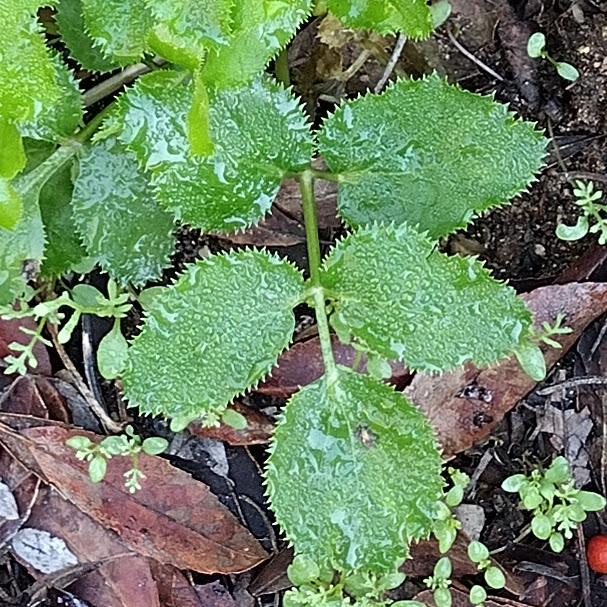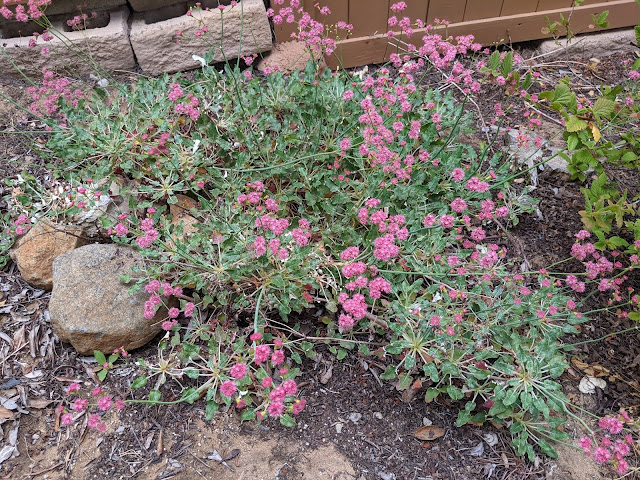I haven't posted anything in over a year. I decided to produce a new post because this spring has been especially good in a number of ways. At the beginning of April the San Diego Chapter of the California Native Plant Society held its annual garden tour and my garden was one stop on the tour. Lots of flowers were blooming, providing a very nice display. Around 400 people visited. It was great fun.
Since then there has been a new round of blooming which is possibly even better than the April bloom. The following are some of the standouts.
In the front yard there has been an extravagant crop of Clarkia unguiculata (elegant clarkia) which I've had for a number of years. It is a very reliable bloomer and seed producer. The flowers come in shades of pink, purple and white. Scattered among the Clarkias are a number of Gilia capitata (blue gilia) and Eschscholzia californica (California poppy).
Matching the Clarkia in showiness is Collinsia heterophylla (Chinese houses). Like the Clarkia I've had it for several years but this year was outstanding. The plants are small in size but quite impressive in their color and structure. Along with the Chinese houses, this section of the garden includes more blue tones - Nemophila menziesii (baby blue eyes), Sisyrinchium bellum (blue-eyed grass), and Sairocarpus nuttallianus (Nuttall's snapdragon). In the photo below the baby blue eyes can be seen but the other two are too small to show up in this photo.

In the side yard I was surprised to find a number of plants of Castilleja exserta (owl's clover). I was surprised because this is the first time it has come up, although I spread seed there some years ago. I really hope they return in the future.
In a small container in the back yard I have a new onion that I got from
Neel's Nursery. It's
Allium abramsii (Abram's onion). It's native to the southern Sierras so it isn't locally native, but I can't resist interesting geophytes and they do really well in a container.
I have another onion in the front yard. It's Allium haematochiton (red-skinned onion). This one has more pink in the flowers and is native to the coast from LA county down into Baja. It is doing quite well in the shade of the coast live oak.
In a container in the back is a very nice Penstemon spectabilis (showy penstemon). It's a little past peak bloom now but there are still some big, gorgeous flowers on it. I've had this before and it didn't live long. I'm going to try to make this one last longer.
One more container has a nice display of Bloomeria crocea (goldenstar), another geophyte that grows from a bulb. It's related to Brodiaea and other small lily-like monocots. After flowering it completely disappears until the next winter.
Finally, a species that I didn't know I had. It is Epilobium ciliatum (willowherb). It is native to much of North America where it grows on the margin of streams and ponds. In my garden it came up in a container where I have water-loving plants such as Erythranthe guttata (seep monkeyflower, shown at bottom). But I did not plant the willowherb and I don't know where it came from. At least I don't remember planting it. It has a tiny flower that would not be noticed by most people. Nevertheless it is a nice addition to the planter so I hope it sticks around.
There will be more plants flowering in the coming weeks, including Delphinnium cardinale, Brodiaea santarosae, and Brodiaea filifolia. I'll post about them soon.













.jpg)









.jpg)

































